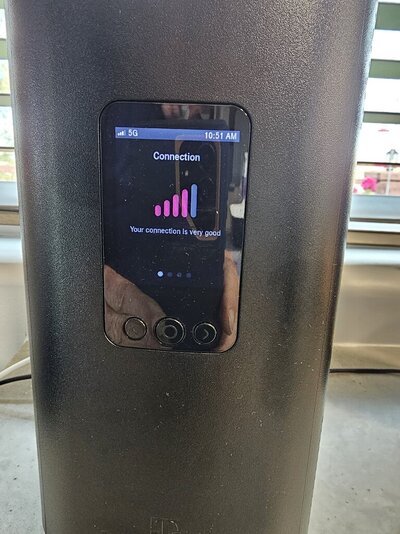SargeW
Site Team
I jumped on Starlink not after it came out. The promise of internet anywhere was too good to pass up. Even though it definitely was not cheap, the promise of advanced technology available anywhere seemed like a dream come true I was still RVing 9 months+ a year, and some were very remote locations. The service was fairly fast, no speed or data caps, 50-100 meg download speeds, but it could drop down quite a bit in urban areas but it was usually possible to stream video. The initial price after buying the equipment at $600 was $110 month.
That plan was a "Fixed Plan" that was assigned by your home billing address. Then they came out with "Portability" which allowed roaming with your dish for an additional $25 a month. Speeds and data were still unlimited. You could turn off portability from month to month when you returned to your home address. That's the plan I had for about a year. Then in June of 2023 the plan increased to $120 a month, plus portability if you used it. Speeds in other than your home area were a minimum of 20 GB download during peak times.
Recently when we went on a 10 day trip to Ca, we took the Starlink as we were going to stay in a few remote areas. While setting up the system and booting it up, I received a message that I was out of my home area, Portability was no longer offered, and the only choice other than go back home was "Mobile Regional". The cost was $150 a month, no speed guarantee, only what was called "best effort". During an evening of trying to stream a TV show, after continual buffering I did a speed check on the Starlink app to discover that their best effort was 1.9 meg of spotty service.
Once you changed, you could not change back to your previous fixed plan, if you wanted to have a minimum speed guarantee you would have to opt in to "Mobile Priority" for 50 GB maximum, for $250 a month. And then for heavy users, 1 Tera Byte of data is $1000 a month, and 5 Tera Byte is $5000 a month.
What once was a pretty good idea, is now kind of a joke. The only advantage to the "Mobile Regional" plan is that you can turn it off and on at will for 30 days at a time. I still have the system, but for now it's in a box, deciding if it has any value at all for us. As a side note, we are using a T-Mobile home internet whole house router. The plan is $40 a month, no data caps, no throttle, and no speed caps.
That plan was a "Fixed Plan" that was assigned by your home billing address. Then they came out with "Portability" which allowed roaming with your dish for an additional $25 a month. Speeds and data were still unlimited. You could turn off portability from month to month when you returned to your home address. That's the plan I had for about a year. Then in June of 2023 the plan increased to $120 a month, plus portability if you used it. Speeds in other than your home area were a minimum of 20 GB download during peak times.
Recently when we went on a 10 day trip to Ca, we took the Starlink as we were going to stay in a few remote areas. While setting up the system and booting it up, I received a message that I was out of my home area, Portability was no longer offered, and the only choice other than go back home was "Mobile Regional". The cost was $150 a month, no speed guarantee, only what was called "best effort". During an evening of trying to stream a TV show, after continual buffering I did a speed check on the Starlink app to discover that their best effort was 1.9 meg of spotty service.
Once you changed, you could not change back to your previous fixed plan, if you wanted to have a minimum speed guarantee you would have to opt in to "Mobile Priority" for 50 GB maximum, for $250 a month. And then for heavy users, 1 Tera Byte of data is $1000 a month, and 5 Tera Byte is $5000 a month.
What once was a pretty good idea, is now kind of a joke. The only advantage to the "Mobile Regional" plan is that you can turn it off and on at will for 30 days at a time. I still have the system, but for now it's in a box, deciding if it has any value at all for us. As a side note, we are using a T-Mobile home internet whole house router. The plan is $40 a month, no data caps, no throttle, and no speed caps.

